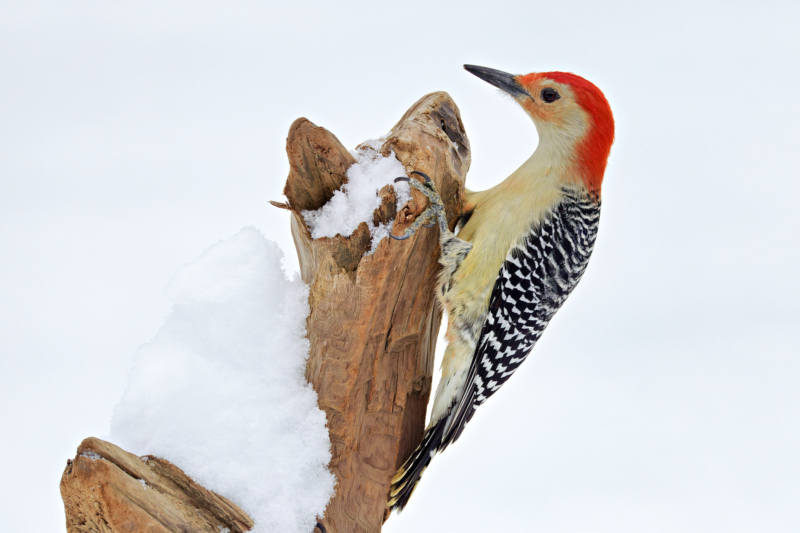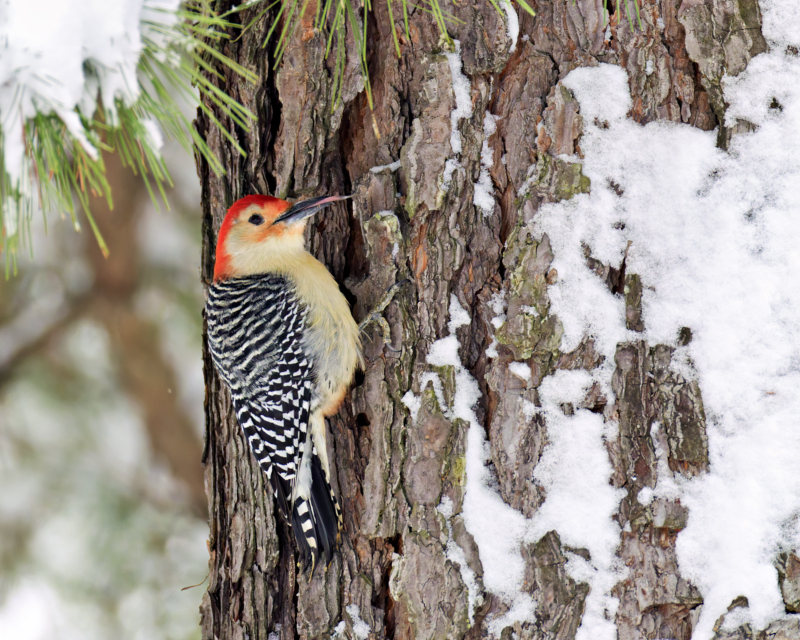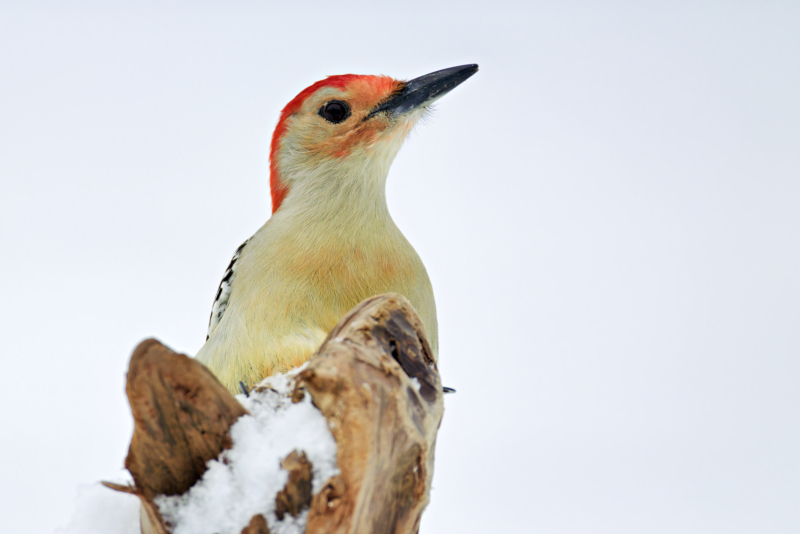After the recent snowfall here in Arkansas, the Red-bellied Woodpecker brought a splash of color to the winter scene as it visited my feeder. Its bright red cap and barred black-and-white wings stood out beautifully against the snow-covered landscape, making it a perfect subject to photograph.

A Familiar Winter Visitor
The Red-bellied Woodpecker is a year-round resident in Arkansas and a common visitor to feeders, especially in winter. Despite its name, the faint red tinge on its belly is subtle, often overshadowed by its vibrant red head. This woodpecker is known for its agility, scaling tree trunks and darting between feeders and branches with precision.

Behavior in Snowy Conditions
Winter snowfall creates challenges for birds as natural food sources become scarce. This particular woodpecker was quick to take advantage of the suet and nuts I had placed in my feeder. It moved cautiously but with purpose, its sharp calls cutting through the quiet, snowy morning. Observing its behavior up close revealed its adaptability and resilience in harsher conditions.
Capturing the Moment
Using my Canon EOS R5 Mark II paired with the Canon RF 200-800mm lens, I photographed the woodpecker in the snow. The long focal length allowed me to maintain a respectful distance while capturing the intricate details of its plumage and its interaction with the environment. The snowy backdrop added a clean, minimalist feel to the composition, making the bird’s colors stand out even more.

Supporting Wildlife During Winter
Keeping feeders stocked with suet, seeds, and nuts is one way to support birds like the Red-bellied Woodpecker during the winter months. Not only does it provide them with essential nutrition, but it also offers unique opportunities for observing their behavior and capturing stunning photographs.
This encounter was a reminder of the beauty and resilience of Arkansas wildlife, even in the coldest months. If you’re a bird enthusiast or photographer, winter offers a chance to connect with nature in a way that’s both rewarding and inspiring. Keep your feeders filled and your camera ready—you never know what might visit.
